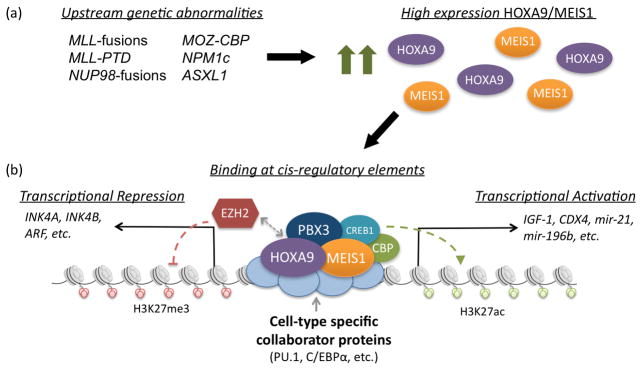Figure 2.
Model for HOXA9-mediated leukemogenesis. (a) A variety of upstream genetic abnormalities are associated with high expression of HOXA9 and its cofactor MEIS1, both of which are known to play an essential role in acute leukemias. (b) HOXA9 and MEIS1 promote malignant transformation through binding at cis-regulatory elements throughout the genome, whereby they activate and repress downstream gene expression. The targeting and stabilization of HOXA9/MEIS1 at specific loci is likely mediated by cell-type specific collaborator proteins, such as PU.1 and C/EBPα. Upon binding at loci along with the additional cofactor PBX3, HOXA9/MEIS1 recruit coactivating and corepressing histone modifying complexes, such as CREB1/CBP and EZH2 respectively. Recently established activated targets include IGF-1, CDX4, mir-21 and mir-196b. Recently established repressed targets include INK4A, INK4B and ARF.

